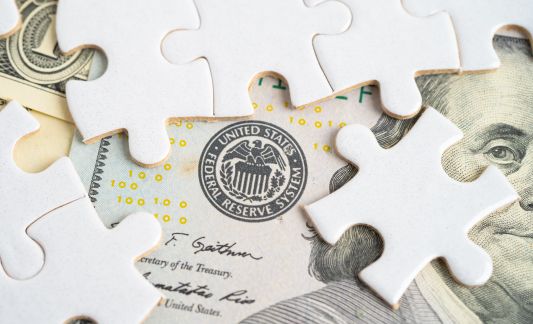Help Isom IGA recover from devasting floods

3 min read
Inflation, Stagflation, Disinflation, Economic Pessimism and the Reality of the U.S. Economy
Written by John Ross
Sep 6, 2023
How’s that for a headline? Or better yet, how’s that for a description of the current economic situation in the U.S.? Confused? You are in good company.
American consumers don’t know one “-flation” phase from the next, but they don’t have to be economists to know that the American economy seems to be a lot of things at once, and none of them make any sense.
At the end of last year, most economists were predicting a looming recession. As a result, the Fed has been raising interest rates at record-breaking speed to slow economic growth and thus halt rising inflation. At least, that’s the theory.
But is it working? All the normal indicators don’t seem to make any sense at all.
- Inflation was supposed to curb shopper spending. Though it has slowed, consumers continue to spend (the Consumer Price Index (CPI) rose by 0.2% in July).
- Rising interest rates were supposed to blunt the housing market. While housing prices are no longer skyrocketing, they haven’t plummeted, and demand is still strong (available inventory was down by 7.9% at the end of August compared to a year ago).
- Inflation plus rising interest rates was supposed to punish the stock market, yet Wall Street was still growing in July: the S&P 500® was up 3.11% and the Dow Jones Industrial Average® increased 3.35%. While they decreased in August, the market is still up compared to last year.
In fact, the U.S. economy not only is strong, but really strong—when you look at it historically. The unemployment rates are near a 55-year low, inflation in most sectors is falling, and while the stock market continues to bop up and down, it is still at or near historic highs in almost all sectors.
When we look at the U.S. economy compared to other developed nations, we have the strongest economy by far. Our IGA stores in China, by comparison, are struggling with country-wide deflation, unemployment issues, a collapsing real estate market, and more. And our stores in Western Europe and Africa are reeling from economic crises in supply chain, commodity inflation, and stratospheric energy costs—much to do with the localized impact of the war in the Ukraine.
So, if things are so good here, why does it feel so bad? Many Americans think we are already in a recession (we are not). Newsweek reported that the latest IBD/Tipp survey found that 58% of Americans think the country is in a recession; a number that is up from 48% in May and 53% in June.
How can it be good and bad at the same time?
Well, we are technically in a period of disinflation. It doesn’t happen very often, which is why most people don’t understand it. Disinflation refers to a slowing down of the rate of inflation, where prices are still rising but at a decreasing pace. (It is distinct from deflation, which involves a sustained decrease in the general price level, and from stagflation, which combines high inflation and stagnant economic growth.)
So, what do retailers need to do in a disinflationary environment?
First, understand that consumers are confused. “How can things be good when I feel so bad?” is a real consumer phenomenon. Shoppers are looking for stability and a trusted ally. And trust relies on transparency to help them make sense about food prices. That means retailers need to be transparent about their pricing and communicate often with shoppers.
The reality is that grocery retailers haven’t expanded our margin percentage, even as suppliers raised costs. If prices are going up in our stores, it’s because of the rising cost of goods, not us exploiting shoppers.
How do you explain this to consumers? Consider “Why prices are rising” in-store signage and social media posts, but most important, make sure to explain it to your associates.
Shoppers are most likely to complain about rising prices at the register. Make sure your cashiers and customer-facing teams understand why prices are going up, and everything you, as a retailer, are doing to combat it. You may be surprised to learn that your store associates actually don’t know how you set prices.
Second, we have to better partner with our suppliers now. The number of retail promotions in the market is still below 2019 levels, and that is just dangerous. Shoppers need discounts now more than ever before; as our inventory supply chain stabilizes, “I don’t want to promote what I don’t have” is no longer a valid reason for cutting back on shopper promotions.
Finally, expect more confusion, especially as we go into the elections. Social media and political rhetoric are bound to create a lot of fear and emotion. This will be true for your associates as well.
The reality is the U.S. economy has experienced the largest ‘seismic quakes’ ever seen. From energy, climate instability, and public health to social unrest, political upheaval, supply chain disruptions, and labor shortages, everything that could shock a system did, and we are coming out of it in amazingly healthy condition.
It turns out the U.S. economic machine is a lot more resilient than any of experts thought possible and that is a good thing for our businesses, for the country, and for the economic health of our communities.
Editor's note: A version of this column ran in The Shelby Report, which one can view here.
Previous Story
← How Data Can Revitalize Your Business
You May Also Like
These Stories on From the Desk of
Dec 18, 2025 9:32:36 AM |
3 min read
Dec 10, 2025 4:57:50 PM |
1 min read


No Comments Yet
Let us know what you think